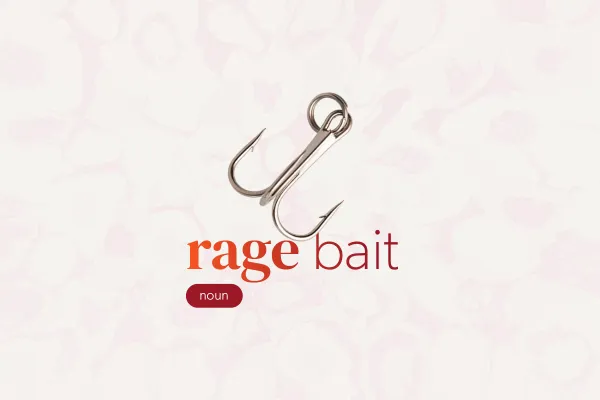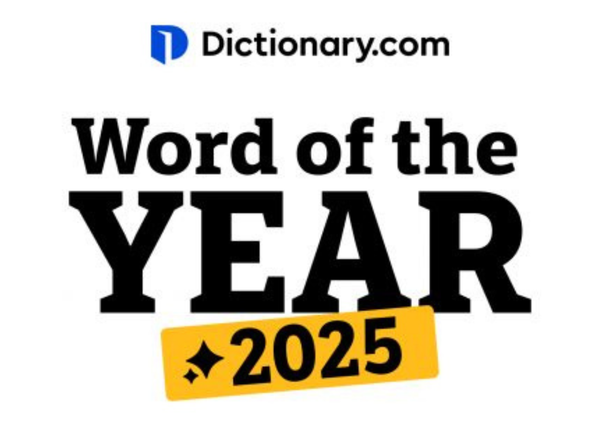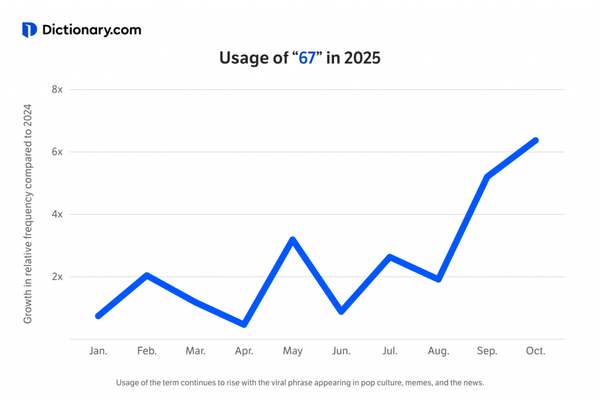What’s in a name?: Eponymous etymology
A sneak peek at Jess Zafarris’ new book, “Useless etymology: Word origins for curious minds”

What better way to leave our mark upon the world than to name something after ourselves?
If something is named after someone, or another proper noun like a place, that’s an eponym, from the Greek ‘given as a name’ or ‘named after’ (epi ‘upon, (called) after’ + onyma ‘name’).
For example, Vanderbilt University is eponymously named after the American industrialist Cornelius Vanderbilt. Shrapnel is named after Lieutenant General Henry Shrapnel (1761-1842), a British army officer and artillery specialist who invented a special kind of exploding shell—which produced, you guessed it, shrapnel.
One of our most common modern words is secretly an eponym: The word guy is ultimately derived from the name of the infamous Guy Fawkes, one of the conspirators in the 1605 Gunpowder Plot, which sought to blow up the Houses of Parliament. The plot is now remembered on Guy Fawkes Day, and his infamy (at least according to Protestant royalists) fully embedded Guy into the English language—but first, in the 1600s and 1700s as a pejorative, meaning a grotesque- or shabby-looking person. Its derogatory sense faded with popular usage, especially after it made its way into American English in the 1840s. Separation from the historical event ameliorated the term. Prior to guy, names such as Jack were often used as similar placeholders or generic terms—and we treat names in the same way today in phrases like average Joe.
Similarly, pants are named after a fictional Italian fellow. The word pants is a shortened version of the word pantaloons. The word pantaloons has referred to several types of legwear since the 16th century. Originally it was a word for men’s tights or hose. Later, pantaloons would refer to men’s knee breeches and women's baggy under-trousers, both of which were gathered at the knee or the ankle. This eventually gave us the word panties for women’s undies, and the British English use of the word pants for underpants in general, regardless of gender. In the late 18th century, pantaloons was extended to our modern-day idea of long trousers and later shortened to pants as well. The etymological source of the word pantaloons, and therefore all pants, is Pantaloun (or Pantalone), a recurring comedic character in 16th-century Italian commedia dell'arte who famously wore red rights. Pantalone was a silly, avaricious old man who tended to get into humorous entanglements with women and servants who openly mocked him.
Another eponymous article of clothing is the fedora. Even though it’s largely associated with men’s fashion today, the fedora was first popularized by—and indirectly named after—a woman. If you’re a theater aficionado, you’ve probably heard of Sarah Bernhardt. She was a famous French stage actress in the late 1800s and early 1900s. She frequently played the female lead in popular French plays by the likes of Alexandre Dumas and Victor Hugo. And she was one of the first big-name actresses to act in motion pictures. But she was also well known for playing male roles, earning critical acclaim for her performance as Shakespeare’s Hamlet in 1899. She was a leading figure in the women’s rights movement, and was one of the first women to publicly wear a pantsuit. But back to the hat. In the 1880s, Bernhardt wore a hat in this style as she performed the role of the title character in the play Fédora by Victorien Sardou, which is about the Russian princess Fédora Romazov. Thanks to the popularity of Bernhardt’s performance, the hat was named after the character she played. Thereafter, around the turn of the century, it was adopted as a defining symbol of the women’s rights movement. It didn’t become a popular men’s fashion item until the fashion-forward Prince Edward started wearing one in 1924.
Sequoia trees are named after Sequoya, a Cherokee innovator who developed the Cherokee syllabary, the first Cherokee writing system. His work not only allowed Cherokee literacy to surge to nearly 100%, but also improved relations between the U.S. government and indigenous groups, and formed the basis for writing systems used in a total of 65 languages in North America, Africa and Asia. He also became a critical representative for the Cherokee people in a deeply contentious sociopolitical landscape.
This one sounds far too fanciful to be true, but I assure you it is an eponym: Sideburns are named after the resplendent and voluminous whiskers of Union Civil War General Ambrose E. Burnside. Starting around the 1870s, they were called burnsides, but shortly thereafter, the words were transposed. But the transposition of burnsides was—er, burned by etymologists, lexicographers and grammarians of the time. Literary legend Ambrose Bierce included sideburns on a "blacklist" of words to never use in his 1909 book Write it Right, instead insisting that burnsides is correct:
Sideburns for Burnsides. A form of whiskers named from a noted general of the civil war, Ambrose E. Burnside. It seems to be thought that the word side has something to do with it, and that as an adjective it should come first, according to our idiom.
In addition to being famously pedantic and a fellow Ambrose, Bierce was also a Union Civil War veteran so it makes sense that this malapropism would have rankled.
Embedded brands: Proprietary eponyms
Eponyms usually refer to people giving human names to things—like the Fahrenheit scale for temperature, which is named after Gabriel Daniel Fahrenheit—but eponyms can also come from brands.
You probably know that Kleenex and Band-Aid are genericized trademarks, but you might not know that they’re also proprietary eponyms, meaning ‘something named after its ownership’. (Proprietary means ‘owned’ or ‘pertaining to ownership’, from the Latin proprietarius ‘owner of property’.)
Some proprietary eponyms, like Kleenex and Band-Aid, have been genericized for so long that they are almost fully divorced from their original brand name usage. Here are a few others:
Bubble Wrap is owned by Sealed Air Corporation. The stuff was invented by two guys who were attempting to make three-dimensional plastic wallpaper. They failed, but they did make a useful (and entertaining) packing material.
Moxie, used generally from 1930, comes from the brand name of a bitter syrup first marketed as the medicine Moxie Nerve Food in 1876, then sold as a soft drink starting in 1884. The brand may be from a Native American Abenaki word for ‘dark water’ that appears in the names of several lakes and rivers in Maine.
Ping-Pong is currently owned by Parker Brothers, though it was first trademarked by the British manufacturer J. Jaques & Son Ltd in 1901. The game ping-pong, or table tennis, did exist before that, though, and the term may have been used before the trademark. Same with Breathalyzer, Jacuzzi, Rollerblade, Super Glue, Windbreaker, Zipper and even TV Dinner.
The word soccer is a twisted eponym—one named after an association rather than a commercial brand. Soccer is short for association because, in the 1800s, in British universities, the sport was differentiated from Rugby football by calling it Association football, after the International Football Association Board that governed the sport. It was originally called Assoc, but in British university slang you’d often add -er onto a syllable of a word, so rugby became rugger or footer, and Assoc football became soccer. So despite the British insistence that Americans call “football” by the wrong name, it was the Brits themselves who first gave it that name.
Gasoline is oddly somewhat eponymous and somewhat proprietary. It all has to do with John Cassell, an Englishman who sold refined petroleum for powering lamps. Based on his name, he called it Cazeline. You might think he used the Latin-derived chemical or elemental suffix -ine, to make it sound sciency, but nope: he used a Greek derived suffix -elene, from Greek elaia, ‘olive’.
He even had a fancy ad placed for it: “The Patent Cazeline Oil: safe, economical, and brilliant … possesses all the requisites which have so long been desired as a means of powerful artificial light.”
Shortly thereafter, an Irishman named John Boyd began selling counterfeit cazeline in his shop. Cassell found out and sent a nastygram insisting he desist. Boyd changed the spelling of his product to begin with a G: Gazeline. American refineries took the name gazeline and turned it into gasoline. Here’s where a little bit of chemistry logic does start to come in: , gas- because it combusts, -oli- from the Latin oleum meaning ‘oil’ (just like in petroleum), and -ine from that Latin elemental ending -ine/-ene.
The use of gasoline in the States and petrol or petroleum in most other places pretty much boils down to marketing. Petroleum is first recorded in the 1400s, first in reference to crude oil—or literally ‘rock oil’ (Latin petra ‘rock’ + oleum ‘oil’). The shorter petrol was also used as a word for crude oil as early as the 1580s. Petroleum was applied to the refined liquid used in internal combustion engines starting in the late 1850s, and petrol was first used to market refined petroleum as a solvent in the 1860s by British wholesalers, and then as a fuel shortly thereafter. Entirely coincidentally, the first British company to use the word petrol to describe its products was co-founded by a fellow inaptly named Eugene Carless. British refineries also used motor spirit as a generic name for automotive fuel and aviation spirit for aviation fuel.

If you’d like to support Linguistic Discovery, purchasing through these links is a great way to do so! I greatly appreciate your support!
Check out my entire Amazon storefront here.




